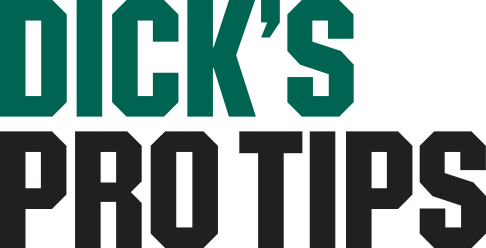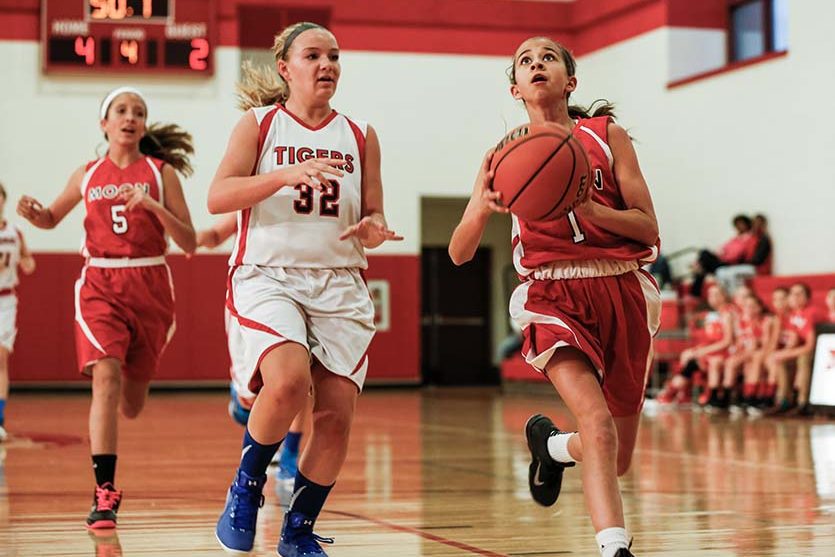5 Positions in Basketball and What They Do

PRO TIPS by DICK'S Sporting Goods


Start here for the gear you need and advice from our experts.

Basketball 101: Basketball Positions Explained
Learn about each player's role on the court to get a better grasp of the game.A good basketball team is like a well-oiled machine. Five players step onto the court, each filling a specific role, working toward the ultimate goal: victory.
But what does each of these positions entail?
A basketball player generally falls into one of five positions: point guard, shooting guard, small forward, power forward and center. Pro Tips is here with a breakdown of these five positions. Take a look at the abilities, skills and qualities needed to be successful at each position.
POINT GUARD
The point guard plays a pivotal role in their team's tempo and execution. This position requires a high basketball IQ, as the point guard acts as the on-court coach by setting up plays. Point guards bring the ball up court, direct traffic and make the decisions that ideally result in high-percentage shots.
Point guards must have solid passing and ball-handling skills. As the floor general, point guards need to be vocal. Gyms can get loud. Point guards must be able to overcome the noise to set up plays.
On offense, point guards need the ability to drive the lane. They also need a solid jump shot and 3-pointer. On defense, they can focus on guarding the other team's best ball handler and getting into the passing lane for a steal.
The point guard is often the shortest player on the court. However, that isn't always the case. Any player with the necessary skills can play the position, no matter how tall they are.
Skills and attributes needed to play point guard include:
- Ball handling
- Passing
- Quickness
- Communication
- Composure
- Unselfishness
SHOOTING GUARD
As the name suggests, shooting guards need to be able to put the ball in the hoop. This position is often reserved for the team's best outside shooters.
But the shooting guard — also known as the two-guard — needs more than a good 3-point shot to be successful. They also need to have strong off-ball movement like running through screens and finding open spaces.
While they don't need to be as skilled as point guards, solid ball handling is important for two-guards. Shooting guards are typically the secondary ball handler. This skill also allows them to attempt their own shots off the dribble.
Additionally, shooting guards need to have strong defensive skills. The size of a shooting guard can vary. Some will be the same size as the point guard, while others can be as tall as some of the forwards on the team.
Skills and attributes needed to play shooting guard include:
- Shooting
- Ball handling
- Moving without the ball
- Playing strong defense
- Rebounding
SMALL FORWARD
Don't let the name fool you – the small forward plays a huge role. Also known as the three, this is possibly the most versatile player on the court.
Playing small forward requires a blend of skills that shooting guards and power forwards possess. Small forwards need to be strong and scrappy enough to box out and haul in rebounds. However, they must also have the agility to elude defenders, slash to the rim and hit jump shots.
On offense, a solid mid-range shot, along with the ability to drive and cut toward the basket, can help a small forward stand out. Quickness and strength inside are both assets when playing small forward.
Most small forwards fall in between the shooting guard and power forwards when it comes to height.
Skills and attributes needed to play small forward include:
- Inside and outside scoring ability
- Ball handling
- Quickness
- Rebounding
- Guarding multiple positions
POWER FORWARD
The closer to the hoop you go, the tougher things get. The power forward lives close to the rim, muscling out buckets and fighting for rebounds. This position is also known as the four.
The position requires a blend of strength and size. A power forward needs to work on their skills in the paint, like boxing out and posting up defenders. They also need to be able to set screens to help teammates get open.
To be successful on offense, power forwards need to use an array of shots. Putbacks, short jumpers and baseline fades can make a power forward an effective offensive threat. They should also be proficient at shooting a mid-range jumper.
Skills and attributes needed to play power forward include:
- Size
- Strength
- Scoring in the paint and from midrange
- Rebounding
- Shot blocking
CENTER
Usually the tallest person on the team, a center defends the rim on one end and is a constant threat beneath it on the other. The center position is also known as the five. While size is a major part of being a center, this player also needs to be athletic.
On offense, a center needs to be able to create their own shot in cramped spaces and snag rebounds out of the hands of others. Centers also need to be proficient on offense, playing with their back to the basket. Footwork is key to scoring inside the paint. Centers must also be able to work with teammates by setting up screens.
On defense, the center is usually the best shot blocker and a solid rebounder to eliminate opponent's second-chance baskets.
Skills and attributes needed to play center include:
- Size
- Strength
- Shot blocking
- Rebounding
- Inside scoring
HYBRID POSITIONS
Basketball is a sport that has evolved throughout the years. While there are five traditional positions, sometimes a player doesn't fit into those roles. Instead, they play in a hybrid or non-traditional position. These players often combine the skills needed to play two separate positions. These hybrid positions typically start at the high school level.
Examples include:
- Point Forward: This is usually a small forward that takes on the role of a point guard. They will need the skills required to play small forward with the added responsibility of initiating the offense.
- Combo Guard: This player can fill either the point guard or shooting guard positions. They will need strong ball-handling and shooting skills.
- Swingman: This is a player who can play small forward or shooting guard. They tend to be taller than a typical shooting guard, so they are not overmatched at either position.
- Stretch 4: This is a power forward with the ability to make shots from 3-point range. The threat of hitting a shot from beyond the arc "stretches" the defense and can open driving lanes for guards.
Each position on a team has its own skillset, physical attributes and competitive nuances. By gaining this understanding, you can get better at predicting where players are going to be and what they're going to do when they get there.
Looking to further your knowledge of the game? Check out this guide to common basketball defenses to learn the different types of zone and man-to-man schemes.
5 Positions in Basketball and What They Do
Source: https://protips.dickssportinggoods.com/sports-and-activities/basketball/court-essentials-basketball-positions-explained